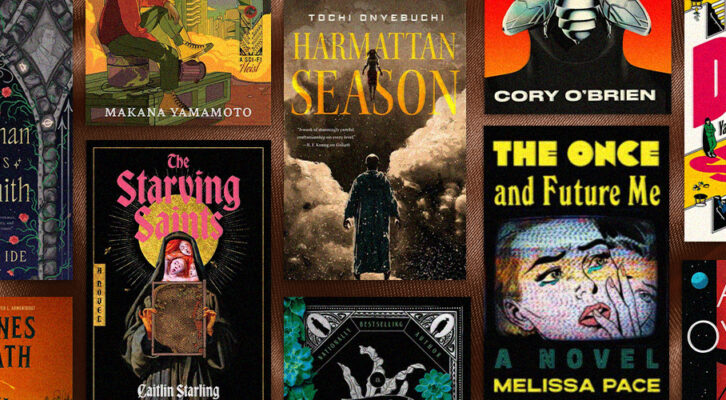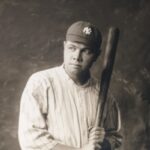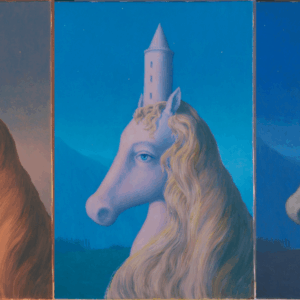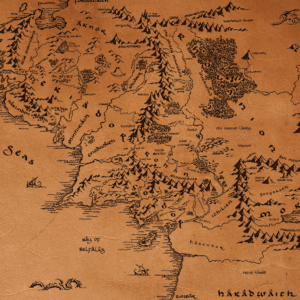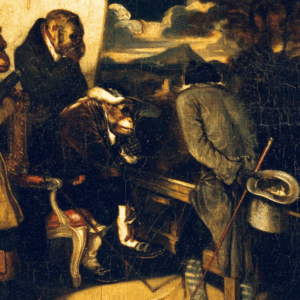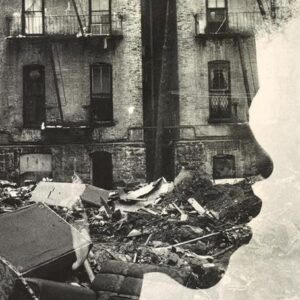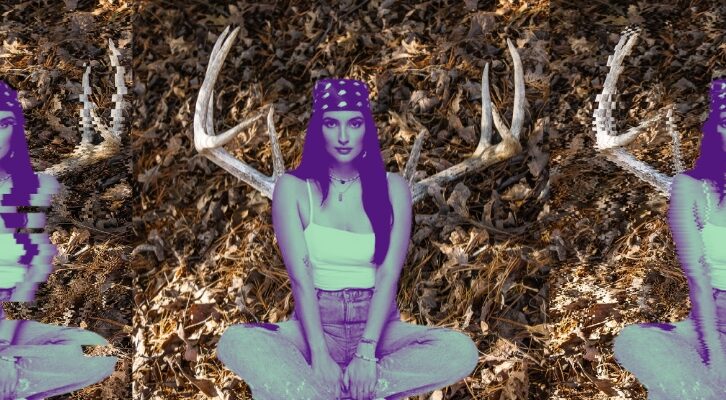
First Memories, First Lessons: Chyana Marie Sage on Grief, Narratives, and Cree Spirituality
The Author of "Soft as Bones" Offers Up Her Life in Fragments
Ăkoosipāyow means it is dew, there is dew, and what is dew if not something that emerges as a result of intense pressure? It is tiny drops of water that form on cool surfaces at night. When atmospheric vapor condenses at a rate far exceeding evaporation, it leaves its mark—a residue, an imprint of the thing that came before.
I used to tell people that my father was dead. That truth was far more digestible, far less tragic, and much more acceptable for people to grasp than my truth. I was twelve years old when I buried my father alive. I don’t mean that in the literal sense, but sometimes it feels like I do.
I imagined him as a burial ground, a forgotten one.
A covered-up one.
Abandoned.
I used to tell people that my father was dead. That truth was far more digestible, far less tragic, and much more acceptable for people to grasp than my truth.
One where someone would have to point out the site and declare, “It happened here. If you start digging, you will find the children.”
I dreaded dinners at friends’ or lovers’ houses because of the inevitable question: “What do your parents do for a living?”
It’s not exactly polite dinner conversation to say, “My father was a big-time crack dealer for most of my life, and now he exists someplace in British Columbia where he has two children with a girl who is the same age as me.”
For someone who despises lies, this was one I granted myself. I learned from a young age that truth is something that can be crafted, and it is often tailored and specially designed to portray an image that a person wants others to see.
Everything I bring forward here is what came before the moment that shifted the rest of my life—the juncture that unravelled the beginning and reshaped the ending. I have extracted it all from memory, artifacts, journals, and now I place it in a cheesecloth, carefully balanced above the specific beakers to examine it in the way it needs to be examined. But in the end, I have a feeling that it all belongs in the same place.
I give you me—in fragments.
But how do I give you little Chy-Chy without my father? He took up so much of my space when I was a young girl. Even in his absence, he took up space. He and I were innately connected.
In some ways, we still are.
In some ways, we always will be.
There is a lot I can’t remember, but the memories I do have are limited to spaces I occupied, things I was intrinsically linked to, scenes of my childhood as opposed to full stories—a bowl of soup filled with more crackers than liquid, a friend’s father screaming at me, the sun shining and me, eating on a porch, food cooked in the Easy-Bake Oven gifted to me by the first boy I had a crush on, who was a foster kid to my dad’s parents.
He was blond and blue-eyed, both things I wasn’t, yet both of us were akin to abandonment, not quite known to us then, but still present.
Perhaps memories are always tied to places, objects, and people because what are we, who are we, without the external forces that mould us? Who are we without what we are linked to? We are the culmination of everything that interacts with us, everything we interact with, everything that came before, and somehow all of those coalesce to shape a human being. There is external inheritance, and then there is internal, latent. The bits that make up our being on a cellular level.
When I think of those bits I recall things my mother tells me—how I was born a vivacious little girl who never liked to sit still, climbing trees all day long, catching frogs, writing songs, and running through the yard on bare feet as if pine needles didn’t exist. She says I always aimed big, was fearless on the playground, a warrior for justice, and I could watch someone do something once and immediately pick it up, as if I were born with a kind of knowing.
She tells me all the ways all three of her girls were born with such different personalities, such varying core characteristics, and these, for me, are the varying shades of each soul.
Many moons ago, deep in the woodlands of Northern Alberta, lived evil spirits known as Witigos. They had hearts made of ice, and appetites that could only be satisfied by the blood and flesh of human beings. As dark entities, Witigos were drawn to inhabit bodies with souls that had lowered their vibrations, as this made them easier to pry into. There are many factors that weaken a soul: alcohol, drugs, depression, anxiety, abuse, exerting control over another being, mistreating people, mistreating animals, mistreating the land.
On my father’s side of the family, we are primarily Woodland Cree, even though we also have Saulteaux and Mohawk ancestry. Woodland Cree are deeply spiritual beings who lived day to day within, around, and through the forests: hunting, trapping, following the buffalo.
And because of the harsh conditions and precarious nature of survival, some of the most powerful sorcerers were Woodland Cree. They made amulets, called upon spirits to watch over and bless the hunts with offerings, and performed sacred killings— these practices were of utmost sanctity for the Woodland Cree. These sorcerers were believed to have supernatural abilities that could cause something as simple as making a person fall in love, or as deep as ensuring the death of an enemy, no matter how great the opponent’s strength.
On my mother’s side, we are primarily Plains Cree, who were notorious for their strength. Plains Cree showed a ruthlessness for attacking and slaughtering their enemies in the night, but even they feared the Woodland Cree for their uncanny magical abilities. But despite all the powers the Plains and Woodland Cree cumulatively possessed, they both feared deeply the Witigos and the Pakakos.
The Pakakos is a skeleton spectre who soars above the forest, preying on poor, disrespectful hunters who kill unnecessarily—those who harm an animal and let it escape, wounded and unable to defend itself against other attackers.
But the most feared of all evil spirits is the Witigo, who has the ability to possess the body of a human being and turn him into a cannibal.
The only way to eradicate that evil spirit is for the person’s own family to kill him, creating cycles of harm.
Or, perhaps, that death is exactly what the family needs to stop the cycle.
Kimowanihtâw is when she makes it rain, and this makes me think of a girl in a field adorned in her feathers and traditional dress, summoning the spirits of the gods to rain down and cleanse the earth alongside her. The rain dance is a way to cleanse evil spirits, releasing the people and the land from the power they held. This idea has always resonated deep in my bones.
The most prominent space of my childhood was an acreage with vast fields, and I danced through them, rain beating down upon my head.
It was my favorite space, but before it we lived in Port Coquitlam, British Columbia, in a large white house with multiple levels. My dad, my mom, my older sister Orleane, my baby sister Chayla, and I all lived with my dad’s parents and their foster kids. Nimosôm, my grandfather, was a big Cree man, and my grandmother made the best bannock around.
For a long time I thought that she was Métis, but I learned that she was actually English. Nohkôm Betty Powder had said that if her son was going to marry a white woman, then she sure as hell better know how to make bannock, moccasins, and mukluks. Before she passed away, Kokum Betty taught my grandmother to become a master beader and adopt all the Woodland Cree ways.
Once, as a little girl, I woke up with a perfect braid in my hair—not a strand out of place. My mom asked my dad if he had done it while I slept, but he hadn’t. I remember stroking my hair and listening to them speak about who had braided it. Nohkôm had passed away not long before this, and we determined it must have been her spirit.
I was Kokum Betty’s first great-grandbaby from her first grandchild: my father. Frank. A big Cree man with the same gap between his two front teeth as his father. Nimosôm.
Us Crees, we believe in spirits, visions, and dreams. We believe that each living thing possesses a spirit, which is eternal, and when we die, that spirit continues its journey in the universe.
When I was three I had a stuffed animal I loved too much. It was a black-and-white cat that I needed above all else and carried with me wherever I went. My first memory is of climbing up to the top floor of the white house, opening the window, staring down at the grass, and holding this cat in my small hands as I dangled it out of the frame. Despite feeling a pain inside my chest, I opened my fingers and watched it fall down down down until it hit the green blades below.
We believe that each living thing possesses a spirit, which is eternal, and when we die, that spirit continues its journey in the universe.
Momentarily, I was free. But just as quickly, I felt a sharp pain in my stomach. I ran downstairs and out the back door as quickly as I could, barefoot on the grass. I picked up the cat, hugged it in my arms, apologized, and took it inside with me.
This memory has followed me, year after year, and to this day, it is clear in my mind. As clear as a first memory can be. It’s more the emotion that I call upon.
A feeling of not wanting to depend on this thing, this stuffed cat I adored with all my heart, and yet, upon release, I was not ready to let it go. I needed to embrace it once again until the true moment would arise when our time together could come to an end.
I believe that our first memories are indicative of the core lesson we are meant to learn in this world, this lifetime. This stuffed cat was the precursor to the lesson I would have to learn again and again: the one of letting go.
______________________________

Excerpted from Soft as Bones: A Memoir by Chyana Marie Sage, 2025, published by House of Anansi Press. Reprinted with permission from the publisher.
Chyana Marie Sage
Chyana Marie Sage is a Cree, Métis, and Salish writer from Edmonton, Alberta. She has an MFA in creative nonfiction from Columbia University and lives in New York City. Chyana loves to travel and be with nature. She is the author of Soft as Bones: A Memoir.











